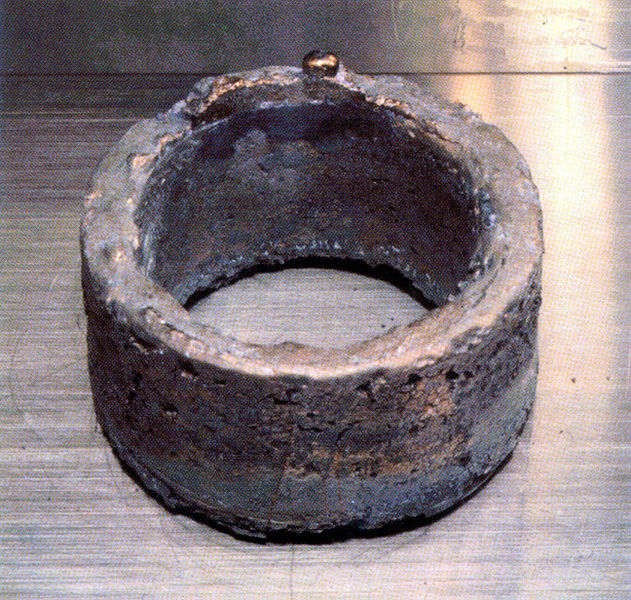Plutonium is a silvery-grey radioactive actinide metal with the symbol Pu and the atomic number of 94. Plutonium was first synthesized in 1940 by Glenn Seaborg an Edwin McMillan at the University of California by bombarding U-238 with deuterons which are nuclei of deuterium containing a neutron and a proton. Following its synthesis, plutonium-244 was discovered in minute quantities in the natural environment.
Plutonium is beyond uranium in the periodic table which makes it a “transuranic” element. It can react with carbon, halogen gases, nitrogen, silicon, oxygen and water. It expands when exposed to moisture and forms flakes into a powder which can spontaneously ignite. Under normal conditions, plutonium is hard and brittle like grey case iron. It has to be combined with other metals to make it soft and ductile. It is not a good conductor of heat or electricity and it has a low melting point but a high boiling point.
Plutonium has twenty six isotopes which vary in atomic weight from Pu-228 to Pu-247 and include 7 modes with excited nucleons. Their half-lives vary from Pu-244 with a half-life of 80 million years to Pu-239m1 with a half-life of 193 nanoseconds or billionths of a second.
Plutonium is the product of nuclear fission. Different isotopes are produced in the radioactive decay of different elements. Higher weight isotopes of plutonium can be created by bombarding plutonium isotopes with more neutrons. Plutonium is difficult to make and it is very difficult to separate the isotopes so particular isotopes are usually made individually with neutron capture.
The most important isotope of plutonium is Pu-239 which is fissile meaning that it can be made to sustain a fission reaction. Bombarding Pu-239 with slow thermal neutrons causes its nuclei to break apart releasing energy including gamma radiation and more neutrons. Pu-239 is created by bombarding U-238 with neutrons and then recovering the plutonium by reprocessing. Plutonium 238 is utilized as a heat source in radioisotope thermoelectric generators which are used for power in some satellites. Plutonium 240 fissions spontaneously at a high rate and make the material containing it less useful for nuclear reactor fuel and nuclear weapons production. Because of this property, the ratio of Pu-240 found in a sample is used as a way to grade the sample. Supergrade plutonium containing less than 4% Pu-240 is used in naval weapons stored near ships and personnel because of its relatively low radioactivity. Less than 7% of weapons grade plutonium is Pu-240. From 7% to 19% of fuel grade plutonium is Pu-240. Fuel grade is used in as fuel in nuclear reactors. The spent fuel from light water and CANDU is considered reactor grade plutonium and it contains more than 19% Pu-240.
If a sufficient mass of weapons grade plutonium 329 is formed into a sphere, it can achieve a critical mass which is the smallest amount of a fissile material needed for a sustained nuclear reaction. A greater mass than the critical mass is referred to as super critical. With the right design and treatment, a super critical mass can lead to a run-away chain reaction resulting in an atomic explosion. In an atomic explosion a fraction of the binding energy of the plutonium nuclei is converted to light and heat. The fission of a single kilogram of plutonium can create an explosion equivalent to 21,000 tons or 21 kilotons of TNT.
Plutonium ring:
